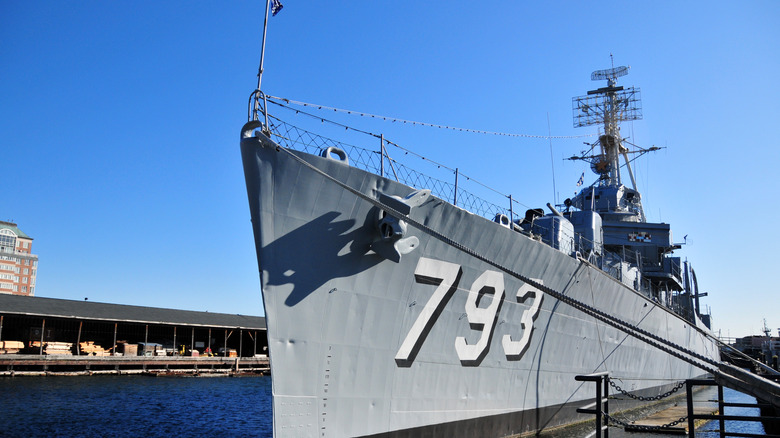What Is A Hull Designation On US Navy Ships & Why Is It Important?
Navy ships are among the most potent and capable vessels in the U.S. military today. These ships come in various shapes and sizes, from the small Cyclone- and Archer-class patrol boats to the larger Ford-class aircraft carriers, known for their enormous size and nuclear-powered engines. They also incorporate some of the best technology available, including advanced weapon systems that can devastate a theater of war in minutes. Given their complexity, it's understandable that many defining features, such as their hulls being painted grey, can confuse those unfamiliar with this world.
Hull designations, which are essential for identifying, categorizing, and differentiating these ships, also fall into this category. A hull designation is simply an alphanumeric code the Navy assigns to a vessel. These designations generally have two parts. The first is the alpha designation, a series of letters indicating the type of ship.
They can consist of two letters, like FF for frigate and DL for destroyer leader, three letters, such as DEG for guided missile destroyer escort and ARB for battle damage repair ship, or more than three letters, as seen in examples like ARSD, which stands for salvage lifting vessel. The second part of the designation is the hull number. This is a serial number noting a ship within its particular class. Every vessel receives a unique hull designation.
The first part of the hull designation denotes roles and functions
Like any other massive military unit, the Navy heavily specializes its forces so they can perform better. This specialization is seen in its vessels, which the Navy categorizes according to capabilities, roles, and functions. As such, these ships perform very different tasks, from surface combat ships and patrol combatant ships to aircraft carriers and mine warfare ships.
Given the vastness of these roles and functions, the Navy uses the first part of the hull designation to classify a vessel's capabilities, the roles it performs, and the function it serves in the fleet. Some of the most common alpha designations today include CVN or CVA, which denote a ship as an aircraft carrier.
A good example is the mighty USS GERALD R. FORD, regarded as one of the most lethal combat platforms in the world. You might also come across DDG, which designates a guided missile destroyer, such as the largest destroyer ever built, the USS Zumwalt. Other alpha designations include CA for heavy cruiser, CVE for escort carrier, and FFG for guided missile frigate.
Every Navy vessel has a unique hull number
Given how many similarly built, outfitted, and performing vessels are in a fleet, finding more than one type of ship is normal. For example, there can be more than one escort carrier (CVE) in a fleet, making it necessary to have a way to differentiate between them. This is where the hull number comes into play, as it is unique to each vessel that enters service. A CVE-30 will be easier to identify from a CVE-54, simplifying tasks such as distinguishing and organizing for all parties involved.
Combining the alpha designation and hull number is essential as it solves some of the complexities that usually follow U.S. Navy naming conventions. More often than not, the Navy will use the name of a person, event, city, or state for its ships. When the vessel leaves service, the name might be reused, resulting in more than one ship having that particular name.
This can be seen in names such as the USS California (SSN-781), a Virginia-class fast attack submarine, and the USS California (BB-44), a Tennessee-class battleship that served between 1921 and 1959. The hull designation comes in handy when telling these two apart.


